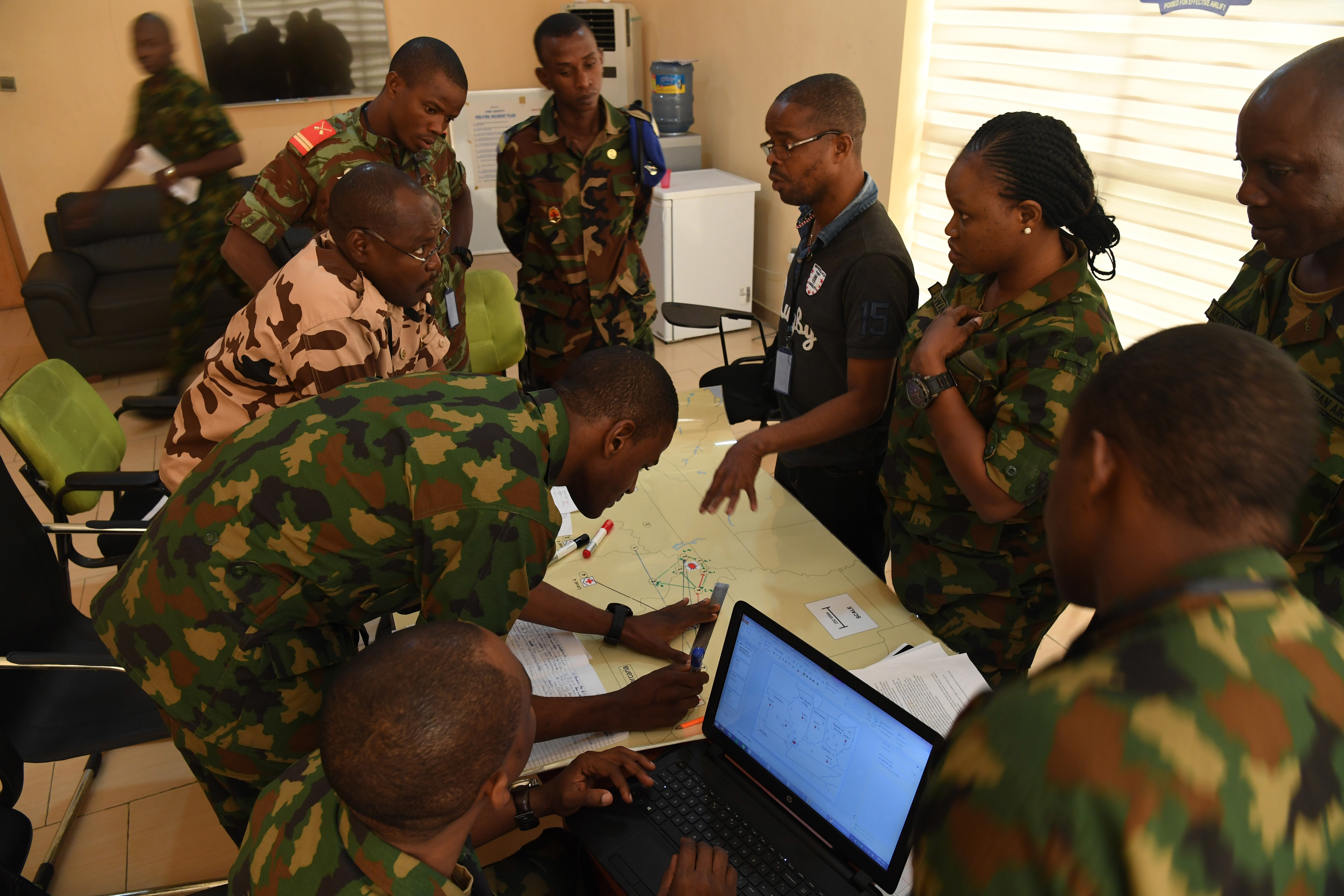
A team of air force members from Nigeria and Chad discuss aeromedical evacuation through a translator during African Partnership Flight Nigeria, Lagos, Nigeria, Aug. 17, 2017. The training included theater planning, airlift planning, aeromedical evacuation planning, medical planning, and patient movement validation. USAF photo by SSgt. Rachelle Coleman.
When a natural disaster hits, it’s critical that nations are prepared to respond. Aeromedical evacuation is a key part of that response, and a recent African Partnership Flight in Nigeria focused on planning for just that scenario.
“In the Lake Chad basin… the possibility of a humanitarian disaster and the subsequent need for aeromedical evacuation” is “very real,” Maj. Andrew Moisan, the team leader for execution for the APF, told Air Force Magazine.
Since such an event would likely cross borders, APF participants from Chad, Benin, Niger, and Nigeria worked together on a scenario that required the resources of all the countries, “so that they could overcome the fact that one country might have the aviation resources, but the other has the doctors,” Moisan said.
Lt. Col. Kimberly Polston, an international health specialist with the office of the command surgeon, US Air Forces in Europe-Air Forces Africa, said the participants were given a scenario in which there was an earthquake near the border, displacing 5,000 people. The five countries of the Multinational Joint Task Force had to work together to respond.
The groups had to plan to deploy 1,000 ground troops, and to send all available aviation and medical assets—including ambulances and mobile hospitals—to the region. “Some of the countries had really strong deployable medical capabilities, and other countries had … larger aircraft to help move these hospitals,” Polston said.
The scenario got medical personnel and pilots talking and working together as a team, and also opened up discussions on how to share resources, she said. One of the countries has C-17s, C-5s, and helicopters, Polston noted, and some of the countries have multiple level 1 and 2 hospitals, whereas some don’t have any.
The trainers gave the participants the weights of a Level 2 hospital and a Level 1 hospital, how much pallet space each takes, how many people are necessary to staff them, and the size and weight of ambulances, but they had to do their own research to determine the weight of an individual service member and the capabilities of each aircraft, Polston said.
The groups also had to look at protecting the health of the troops they deployed, including vaccinations and medications before deploying, and clean water and hygiene once they arrived.
About 30 USAF personnel participated in the mid-August APF, Moisan said, including California Air Guardsmen, airmen from the 18th Air Force at Scott AFB, Ill., airmen from Ramstein AB, Germany, and a medical professional from Air Force Special Operations Command.
Polston “was able to pull resources and expertise from many different areas,” Moisan noted.
The first part of the week focused on classroom instruction and best practices, with the tabletop exercise putting all the pieces together at the end of the week, he said.
“I think our partner nations really enjoyed it, they enjoyed the interaction with the other nations and I think they all really learned quite a bit during this event,” Polston said. “And they said, ‘This is exactly what we need, we need to be working together with our partner nations from a regional approach.”